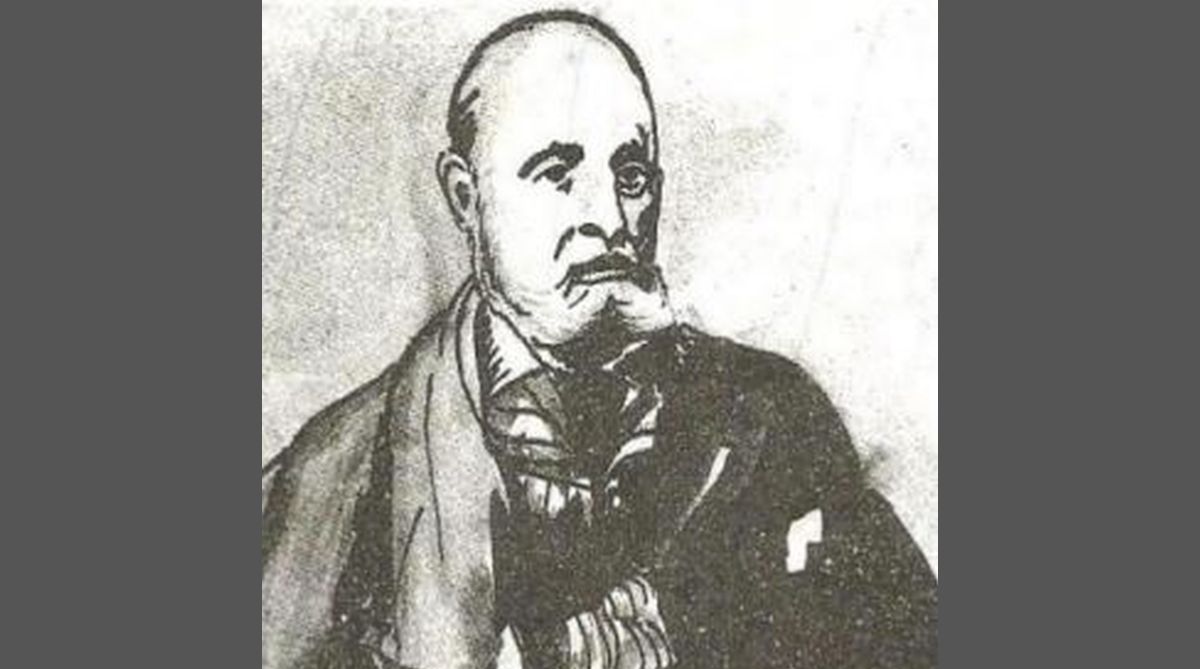Benjamin David Montrose “Muztar”, about whom mention was made in an earlier article in the newly released book Beloved Delhi by Saif Mahmood, was a far greater personality than one thought, thanks to the painstaking research of the late George Heatherley, a descendant of Alexander Heatherley “Azad”, the Ghalib era Urdu poet.
In Delhi, on his annual visit from Perth in 2012, Heatherley had brought with him an extract on the life of the Scottish poet by Dr Ram Babu Saxena, who wrote extensively on the Indo-British Poets of Urdu and Persian. But one got to see it only recently, and it’s worth repeating. “Born on Christmas Eve 1855, the poet bore the same name, Benjamin Montrose, as his father who came to India as a captain in the troops of the East India Company and was shot dead in Patna during the “Mutiny”. His mother died when he was about three years old and he was brought up by relatives, some of who lived in Jaipur. Alice Garg, who runs an NGO, is one of the descendants.
Advertisement
Her mother’s name was Vicky Montrose, daughter of Agnes Montrose, who was a great Jaipur socialite in the 1930s, as noted by my father whom she nearly married. Muztar’s Ustad, Dagh Dehlvi was the son of Nawab Shamsuddin Khan of Delhi and a contemporary of Ghalib. He is the Alexander Pope of Urdu, known for his wit, biting satire and sophisticated verse.
READ | Mirza Ghalib: A timeless love affair
Benjamin David Montrose travelled extensively as a young man and married Rosalind Smith of Mirzapur in 1887. In 1898, he settled down in Allahabad. He had five children ~ Robert Bruce, George Micheal, Henry Micheal, Daphine and Mildred. To quote the extract: “Montrose was an artist and a photographer by profession, who wandered about a good deal visiting, among other places, Simla, Darjeeling, Calcutta, Jaipur, Delhi, Mirzapur. He was genuinely interested in his work and it is said by his daughter that he visited Italy to study art and to see all the various institutions and pictures galleries. He did considerable work for the EI Railway. He also painted the stage screens and scenes for the Coral Theatre, Allahabad.
“Besides this, Montrose did the portraits of the Nizam, Mir Mahboob Ali Khan, the Maharaja of Rewa, the Nawab of Rampur, the Maharaja of Balrampur, and other princes “who treated him with great consideration”. His painting of Edward VII on an opal was exhibited at the Simla exhibition in the last century and was greatly appreciated.”
Maqbul Hussain Ahmadpuri of the Nizam’s dominions wrote in the Urdu magazine Hyderabad Deccan in July 1930 that Montrose was also attached to the Dramatic Company of the Parsi Nauranji as a writer of advertisements and handbills on a salary of Rs 50 and that when the dramatic company visited Mirzapur in 1893 he used to participate in mushairas held in the house of Moulvi Farand Ali, Vakil. Here his paintings also attracted attention and Beni Madho, a rich Mahajan, employed him on a salary of Rs 100 (which was considered fabulous at a time when the buying power of money was more than a hundred times of what it is now). After that Montrose opened a studio in Allahabad and among the portraits he painted was one of the Raja of Manda who was so delighted that he bought it for Rs 200 and also made a present of Rs 1,000 to the painter.
Montrose wrote poetry, English and Urdu, with great ease and distinction. His poetical surname was “Muztar”, and he is stated to have said that he stayed in Delhi ten years and that he learnt the language and art of poetry (from Dagh) there. In the letters of Dagh, references to Montrose are made.
In the letter dated 21 st April, 1898 addressed to Moulvi Naimul Haq “Azad” of Sheikhupur, Dagh enquires from him about the whereabouts of Mr Montrose his pupil. “Montrose was greatly devoted to Dagh and there are numerous references to him in his maqtas (last line of the ghazals). He could compose extemporaneously and one of his impromptu hemistiches was done to complete another hemistich by Dagh.
“The Ghayas ul Muztar (by him) is an elegy on the death of Dagh. It was printed in 1915 at Allahabad (though the Ustad died at Hyderabad in 1905 aged 74). It is a Mukhummus and contains 102 stanzas ‘Bund’. He generally follows the English arrangement of elegies such as that of Milton but has closely followed the Urdu model in his compositions and sentiments. He complains of the tyranny of the sky, personifies the Rose (Gul) the Nightingale (Bulbul), Fidelity and Poetry and they lament over Dagh’s death.
“Montrose was a prolific writer and he composed four dewans, which are in his handwriting and which are preserved in his family. The Razi Haqiqat is a masnavi in Urdu, versifying the Last Supper. It was completed in 1906 and was published subsequently by the Newul Kishore Press of Allahabad. The pamphlet is also called ‘Khatum ul Tuam’.
A short extract reads: “On the 14th day of January, 1906, while lying in my dying bed I thought of finishing the Sacred Version of the Last Supper of Our Lord Jesus Christ into Urdu Verses, with all the veracity and sincerity of the Holy Gospel, except with some digressions my Muse would fain have indulged in, which might have been taken for annotations and commentations to the Holy Supper. This sacred longing had all along been the highest pinnacle of my ambition and earthly desires ere I came to naught. The Sacred awe with which I was then overcome lulled me to a death-like sleep wherein I heard a voice saying: ‘The cloud that veils and shrouds thy mortal hopes…I shall remove’.
“It was perchance the voice of the Man of Sorrows that brought such a change in me that notwithstanding my infirmitly and feebleness I left my bed of sickness with supernatural strength and fortitude to invoke my Muse for the Sacred Strain. More than half of the Work (version) was thus accomplished during midnight hours and the final recovery of my health and strength preceded its completion through the Grace and Mercy of our Lord Jesus Christ. Amen.”
Montrose also brought out two volumes of English poetry ~ one on the War of 1914-18 and the other in a pamphlet entitled Spiritual and Temporal Poems published in 1917 at the Commercial Press, Allahabad. The book of poems contains A Hymn to Mary, the Blessed Mother. The Easter Giftor The Penitent Magdalen, Reflections on the Immortality of the Soul. The Woman of Chanaan, Satan’s Solioquy, St. George Before Apollo, Julian the Apostate and the Temple of Jerusalem, the Solioquy of Robert Bruce of Scotland. “There is probably no poet in the whole range of Anglo-Indian Urdu poetry who shows this rare combination of writing elegant verses both in Urdu and English with equal facility and skill”, according to his admirers. Montrose, who was known to Nehru and Firaq, died aged 75 in 1931 and his wife in 1935.
However, it is not known if his descendants still live in Mayo Road, Allahabad, where Firaq Gorakhpuri too lived during his professorship days in the famous university there. When Dagh died Montrose instinctively wrote these pensive lines: “Ek Dagh tha tau woh bhi tau Muztar guzar gaya/Baqi bacha hai kaun ab Hindostan mein” (who else is left in India now)? A grateful pupil’s tribute to his ustad sent in 1905 from Allahabad to distant Hyderabad of the Nizam.
“That was how,” said the late Ausaf Ali of Hamdard University, Delhi, “Benjamin Montrose maintained a cherished Urdu Shairi tradition”. Dr Ali saw Montrose as a majestic, old townsman in his childhood.











